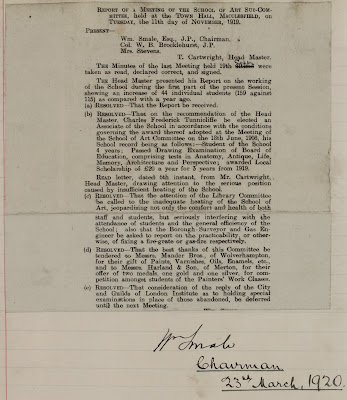Following on from an earlier blog (
http://cheshirero.blogspot.co.uk/2016/04/dialect.html) I wrote about books and articles relating to local dialect in the Local Studies Collection here at the Record Office in Chester, I stumbled upon Thomas Darlington’s The Folk-Speech of South Cheshire (Ref: 200293) which was published for the English Dialect Society (EDS) in 1887 just two years after Robert Holland’s 'A Glossary of Words' used in the County of Chester was issued, also by the EDS. Darlington is rather apologetic about this, but because Holland specifically stated in his preface that he had little opportunity to become acquainted with the dialect in the Southern part of the county, an area he defines as ‘that part of Cheshire lying South of a line drawn from west to east across the county, and passing through Handley (six miles S.E. of Chester) and Crewe), it was felt by Darlington, and the EDS, that this new work was warranted. And at 450 pages in length it clearly was.
The book contains a fascinating introduction talking about the influence of neighbouring dialects and language on that of South Cheshire. Not all though – the “paucity of Welsh words in the folk-speech can only be explained as the result of the singular antipathy which the men of Cheshire have always shown towards their Welsh neighbours.”
What follows is a detailed Pronunciation and Grammar guide (of the kind that used to terrify me when studying languages in Secondary School), and then a rather interesting dialect version of the Book of Ruth (see image below)
The main bulk of the book (nearly 350pp) is a glossary of words as collected by Darlington and used in the defined geographical area. It is a fascinating collection, and arguably his descriptions are a little more readable than Holland’s. Here’s a small selection of entries that caught my eye:
Apperntle, s. an apronful: from appern, an apron. “A apperntle o’ ‘tatoe-pillin’s for th’ pigs”
Chommer, v.a. to masticate, chew. “Whey, if that young foxhaind hanna chommered my slipper aw to bits”
Cuckoo-wuts, s.pl. oats sown after the cuckoo has come. Oats sown so late are not expected to turn out well.
Fecks, or Good Fecks!, interj. an exclamation of surprise.
Goblin, s. a gooseberry.
Hoozy-poozy, adj. wasting time. “Has Dick gone after that missin’ heifer? Whey, one o’ the little lads mit ha’ fatcht her. It is so hoozy-poozy to be doin’ a-that-ns, when hey mit ha’ bin getting on wi’ the milkin’ “
Johnny Raw, s. an ignorant, uncouth person. “Yo bin a pratty Johnny Raw, to be turnt ait by yursel, an’ dunna know a B from a bull’s foot”
Kindle, v.a. to bring forth, bear. Used of all small animals except cats, which are said to kittle.
Lithermon’s Looad, s. a lazy man’s load; a load piled up to save the trouble of a double journey. “An’ nai, ye can go an’ fatch the rest o’ th’ hee; there’ll be rather moor t’n a jag left; bu’ dunna bring lithermon’s looad, else ye’n meebe have a waut “
Smellers, s.pl. a cat’s whiskers. “If I know’d hooa’d cut that cat’s smellers off, I’d tickle their toby”
Three-cornered, adj. irritable. “Yo mun mind what you sen to th’ mester; he’s in a very three-corned wee this mornin’, he welly snapped my yed off when I spoke to him just nai”
As someone born in Sheffield, I also rather enjoyed
Yorkshire, s. cajolery, blarney, attempt to hoodwink or deceive. “Let’s ha’ none o’ yur Yorkshire”
And finally (actually that honour falls to
Zowkers – an exclamation of surprise)…the letter Z itself: “Elderly people have told me this letter used to be called uzzard; and persons now hardly past their prime were taught in their school days to call it zod.”






































